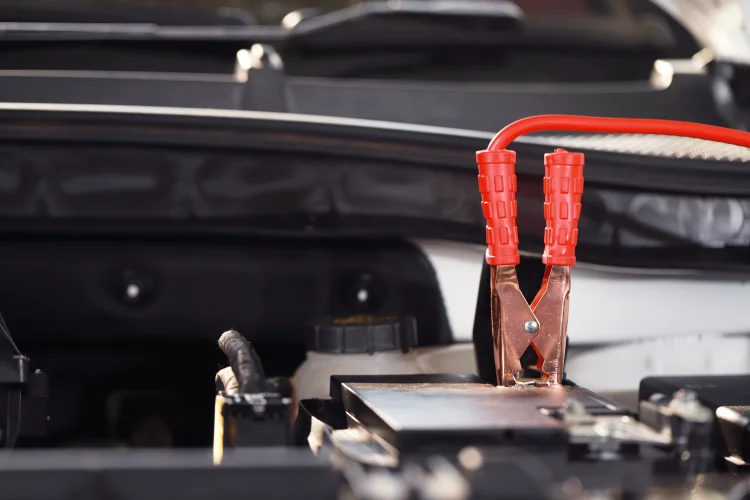How to Use Jumper Cables: A Step‑by‑Step Guide
jump start your car
5,500Getting stranded with a dead battery can derail your day—but with a properly maintained set of jumper cables and a helping vehicle, you can be back on the road in minutes. Follow these steps to jump‑start your car safely and effectively.

What You’ll Need
-
Jumper cables (at least 10–12 feet long, with insulated clamps)
-
A second vehicle with a fully charged battery (the “donor” car)
-
Safety gear (gloves and eye protection recommended)
-
Owner’s manuals for both vehicles (for any model‑specific instructions)
Safety First
-
Park nose‑to‑nose: Position the donor car close enough so the cables can reach both batteries, but don’t let the vehicles touch.
-
Engage parking brakes on both cars and put each in “Park” (or neutral for manuals).
-
Turn off electrical loads in both vehicles—headlights, radio, heater, A/C—so all available power goes to the starter.
-
Inspect cables for frayed insulation or corroded clamps. Damaged cables can spark or fail.
Step‑by‑Step Jump‑Start
-
Identify the terminals
-
Positive (+): Usually red, marked with “+” or “POS.”
-
Negative (–): Usually black, marked with “–” or “NEG.”
-
-
Connect the positive cable (red)
-
Clamp one red end to the positive terminal on the dead battery.
-
Clamp the other red end to the positive terminal on the donor battery.
-
-
Connect the negative cable (black)
-
Clamp one black end to the negative terminal on the donor battery.
-
Clamp the other black end to a solid, unpainted metal surface on the dead car’s engine block or frame—not the negative battery terminal. This ground connection helps prevent sparks near the battery.
-
-
Start the donor car and let it run for 2–5 minutes, building up charge in the dead battery.
-
Start the dead car. If it doesn’t crank immediately, wait another minute or two and try again.
-
Once the dead car is running, carefully disconnect the cables in reverse order:
-
Black clamp from the engine block/frame of the previously dead car
-
Black clamp from the donor car’s negative terminal
-
Red clamp from the donor car’s positive terminal
-
Red clamp from the jumped car’s positive terminal
-
Aftercare & Troubleshooting
-
Keep the revived car running for at least 20 minutes (or take a short drive) to recharge the battery fully.
-
If the car stalls again, the battery may not hold a charge—consider getting it tested or replaced.
-
Persistent no‑start after multiple attempts could indicate a faulty starter, alternator issues, or severe battery damage; have your vehicle inspected by a professional.
Pro Tips for Hassle‑Free Jump‑Starts
-
Store cables properly: Coil them loosely in the trunk to avoid kinks and insulation wear.
-
Practice the clamp sequence at home so you’re confident under pressure.
-
Keep corrosion at bay by cleaning battery terminals with a wire brush every few months.
-
Consider carrying a portable jump‑starter pack—no second car needed, and less risk of mismatched voltages.
Ready for the Road
Knowing how to use jumper cables not only gets you moving again, it gives you confidence to tackle minor roadside hiccups. Keep your cables within reach, maintain your battery, and you’ll turn “Uh‑oh” into “Onward!” whenever trouble strikes.
Use the belt-and-suspenders approach and get an extended warranty from a partner on the Cuvrd platform with roadside assistance included for ultimate peace of mind.
TL;DR: Imagine being stranded on the side of the road with a dead battery—frustrating and stressful. In this guide, we’ll walk you through each step of using jumper cables safely and confidently, from prepping your vehicles to making the right connections, so you can get back on the road in minutes.
— Demetrius McGee
